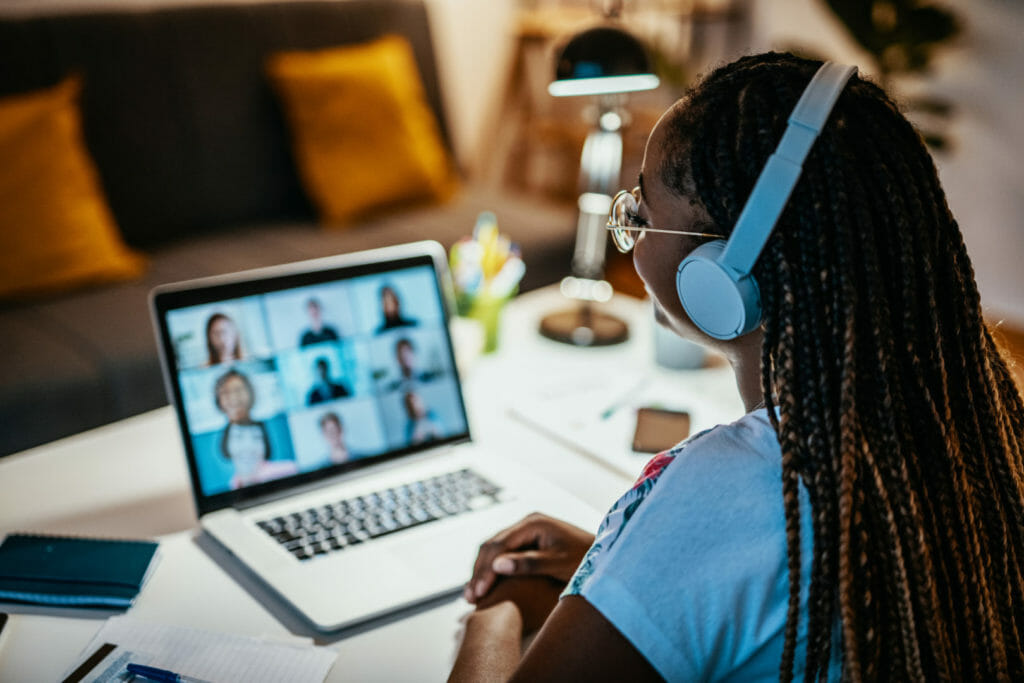The world of education presents all kinds of audio challenges. Audio challenges in classrooms have long existed, but these past few years have only amplified them as more students went virtual. In years gone by, large lecture halls were built with acoustic principles in mind so that students could hear a skillful speaker from any seat in the house.
But these days, form often overrules function, leading to poorly acoustically designed educational spaces. Modern HVAC systems create additional ambient noise, too. Add to that, speakers today are less likely to be accustomed to projecting when they speak.
Today’s increasing reliance on hybrid synchronous learning adds still more challenges, where both in-person and online students must be able to hear the instructor with clarity.
These issues are significant when you consider the cost: students who can’t hear well don’t learn well. And teachers who are overly focused on projecting and speaking loudly don’t teach as well as they could without that distraction.
Audio amplification can solve many of the audio challenges in higher education classrooms. Still, colleges and universities must exercise care in AV installs and need a partner that understands their needs.
Consider these three audio challenges in higher education classrooms, plus solutions for each — all of which are available from the Bluewater team.
Ambient Noise Overwhelming the Classroom
Our reliance on HVAC systems isn’t going away, but they can create significant ambient noise in classrooms. The additional sanitization and filtration equipment many schools have deployed during COVID only adds to the volume level.
Ambient noise can also come through doors, windows, and walls that aren’t properly sealed or insulated.
Dealing with ambient noise is often a case-by-case endeavor, but numerous acoustical treatments exist. Exposed ducts can be wrapped, for example, and softer finishes (like curtains and carpets) can absorb some of the sounds bouncing around the room.
In some classrooms, acoustical panels are the best solution for offsetting ambient noise. If your floors are especially reflective and you’re dealing with too much in-room noise (desks, chairs, coughs, etc.), acoustic panels might be the answer.

Dead Zones in the Classroom
Many modern classrooms don’t distribute sound evenly (without amplification). Some areas of the room can hear the teacher clearly, while others simply can’t. Students in the back of larger classrooms often struggle to hear their professor, but other dead zones may exist as well.
The solution here is in-classroom amplification. Some rooms just aren’t designed so that an unamplified teacher can be heard throughout the space. A podium microphone feeding into a simple PA system may be sufficient, though larger spaces will need properly placed built-in speakers for full coverage.
Remote Learning Audio Issues
Remote learning is a popular choice in higher education. But audio issues can be common, especially when instructors don’t have suitable technology from which to teach.
At Bluewater, we believe that quality remote learning starts with quality AV. Remote instructors need quality video and audio equipment so that students can see and hear them well.
The good news is that this equipment fix doesn’t have to be an expensive one. Simply delivering a quality USB or Bluetooth headset to every remote teacher will do wonders for overall audio quality.

Hybrid Classrooms Bring Unique Concerns
In a hybrid classroom, the instructor has to pull double duty. The in-person audience of students must be able to hear instruction clearly, but so must the online crowd. Relying on an in-room microphone for live amplification and an on-device microphone for remote audio capture can often lead to feedback loops and echoes that create a great distraction.
In an ideal world, you’d also want the remote audience to hear the in-person audience (and vice versa). This isn’t usually possible with a simple or DIY amplification setup.
The solution for the hybrid classroom that needs in-person amplification is a comprehensive integrated system. Such a system would typically pull audio from the primary microphone for both capture and live broadcast or stream, rather than rely on two separate systems for the two groups.
An integrated system might also include microphones placed in the room to capture student audio, and it should pull in audio from live, online students via whatever videoconferencing solution the school is using.
With the right integrated setup, all students — regardless of location — will be able to hear and interact with the instructor and their fellow students.
Bluewater Is Your Partner for Higher Education AV
Whatever your AV needs look like, Bluewater is ready to be your partner for higher education AV services. Our technicians and designers can build out and implement the audio systems you need to enhance the educational experience at your institution.
Ready to learn more? Reach out today.












